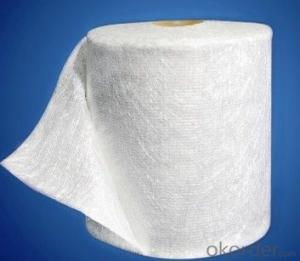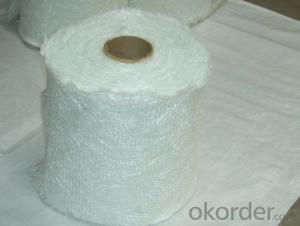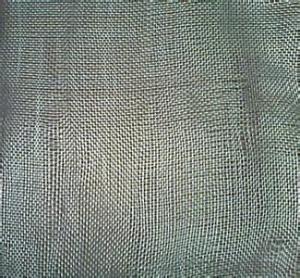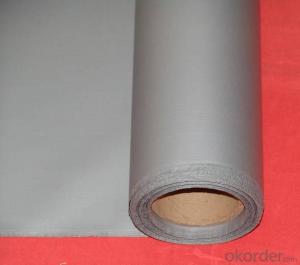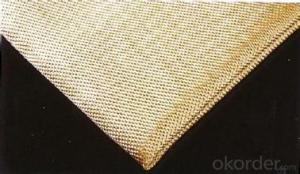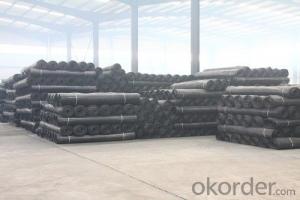Fiber Glass Stitched Mat
- Loading Port:
- China Main Port
- Payment Terms:
- TT or LC
- Min Order Qty:
- 10000 kg
- Supply Capability:
- 200000Kg Per Month kg/month
OKorder Service Pledge
OKorder Financial Service
You Might Also Like
1.Brief Introduction
Two layers of roving(550g/㎡-1250g/㎡) are aligned at 0°/90° with or without a layer of chopped strands(0g/㎡-500g/㎡.
2.Product Structure
3.Product Specifications
Product No. | Overall Density | .0° Roving Density | .90° Roving Density | Chop Density | Polyester Yarn Density |
| (g/m2) | (g/m2) | (g/m2) | (g/m2) | (g/m2) |
E-LTMC1603 | 671.74 | 303.8 | 247.96 | 101.62 | 18.36 |
E-LTMC1608 | 844.76 | 303.8 | 247.96 | 274.64 | 18.36 |
E-LTMC1808 | 903.8 | 303.8 | 307 | 274.64 | 18.36 |
E-LTMC1810 | 934.31 | 303.8 | 307 | 305.15 | 18.36 |
E-LTMC1815 | 1086.89 | 303.8 | 307 | 457.73 | 18.36 |
E-LTMC2408 | 1101.04 | 405.66 | 401.46 | 274.64 | 19.28 |
E-LTMC2415 | 1284.13 | 405.66 | 401.46 | 457.73 | 19.28 |
E-UDL450 | 479.14 | 405.66 | 55.12 | - | 18.36 |
E-UDL500 | 490.85 | 405.66 | 66.83 | - | 18.36 |
E-UDL600 | 608.9 | 566.92 | 23.62 | - | 18.36 |
E-UDL1200 | 1207.34 | 1133.86 | 55.12 | - | 18.36 |
Special specification can be produce according to customer requirements.
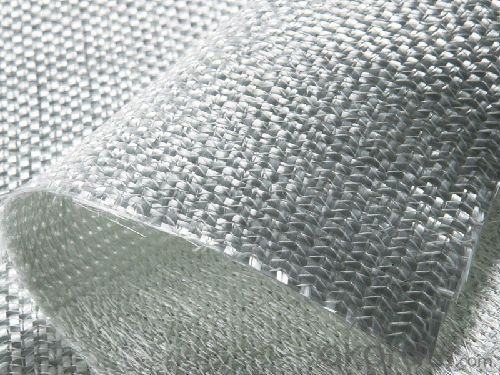
4.FAQ
a.Packaging:
Each roll is wound onto a paper tube which has an inside diameter of 76mm and the roll has a diameter of 275mm. The roll is wrapped up with plastic film,and then packed in a cardboard box or wrapped up with kraft paper. The rolls can be horizontally placed. For transportation, the rolls can be loaded into a cantainer directly or on pallets.
b.Storage:
Unless otherwise specified, It should be stored in a dry, cool and rain-proof area. It is recommended that the room temperature and humidity should be always maintained at 15℃~35℃ and 35%~65% respectively.
- Q:Can fiberglass fabric be used for making awnings?
- Certainly! Awnings can indeed be made using fiberglass fabric. Fiberglass, a material that is both lightweight and durable, finds widespread usage in diverse applications, awnings being one of them. It boasts exceptional resistance against UV rays, water, and adverse weather conditions, rendering it highly suitable for outdoor purposes. Moreover, fiberglass fabric is fire-resistant and possesses commendable insulation properties that aid in temperature regulation and provision of shade. Additionally, it is effortless to clean and maintain, making it an optimal selection for awnings.
- Q:Can fiberglass fabric be used for making outdoor furniture?
- Yes, fiberglass fabric can be used for making outdoor furniture. It is a versatile material that is durable, weather-resistant, and can withstand outdoor elements such as rain, sun, and temperature fluctuations. Additionally, its lightweight nature makes it easy to move and transport.
- Q:What is the resolution of glass fiber cloth and polyester fiber cloth?
- It is mainly made of glass fiber and short needle non-woven fabric composite geosynthetics.
- Q:How do fiberglass fabrics perform in terms of breathability for human comfort?
- Fiberglass fabrics generally do not perform well in terms of breathability for human comfort. This is because fiberglass, being made from fine strands of glass, has a dense and tightly woven structure that restricts air circulation. As a result, the fabric does not allow for efficient ventilation and airflow, which can lead to discomfort and increased moisture buildup on the skin. Furthermore, fiberglass fabrics are often used in applications where thermal insulation is required, such as in insulation materials or protective clothing. The insulating properties of fiberglass fabrics can trap heat and moisture, further reducing breathability and potentially causing discomfort to the wearer. It is important to note that there are other fabric options available that offer better breathability for human comfort. Natural fibers like cotton, linen, and bamboo, as well as synthetic materials like polyester and nylon, are often preferred for their ability to allow air to circulate more freely, keeping the body cool and dry. Therefore, if breathability and comfort are top priorities, it is advisable to consider fabrics other than fiberglass.
- Q:How to deal with the high temperature fiberglass cloth, so that the trimming can not be scattered
- Stick it with cellophane tape and it won't break in the scissors.
- Q:What are the electrical properties of fiberglass fabric?
- Fiberglass fabric is renowned for its exceptional ability to insulate against electricity. As a non-conductive material, it hinders the flow of electrical current. This quality renders it suitable for diverse electrical purposes that necessitate insulation. The fabric can endure elevated temperatures without compromising its insulating capabilities, making it perfect for deployment in electrical insulation blankets, tape, sleeves, and other protective coverings. Moreover, fiberglass fabric possesses a remarkable dielectric strength, denoting its capacity to withstand elevated voltages without succumbing to breakdown. This attribute is vital in scenarios where the material encounters high electric fields, such as in transformers, motors, and generators. Furthermore, fiberglass fabric exhibits low moisture absorption, enabling it to maintain its electrical insulation properties even in humid conditions. Moisture can impact the dielectric strength of materials, but the fabric's resistance to water absorption ensures its reliability as an insulation material. In conclusion, fiberglass fabric possesses excellent electrical properties, including high electrical insulation, superior dielectric strength, and low moisture absorption. Consequently, it is the preferred choice for a wide array of electrical applications.
- Q:Can fiberglass fabric be used for gaskets?
- Yes, fiberglass fabric can be used for gaskets. Fiberglass fabric is widely used in various industries, including automotive, aerospace, and manufacturing, due to its high strength, durability, and resistance to chemicals and extreme temperatures. These properties make it suitable for gaskets, which are used to prevent leaks or to provide a seal between two surfaces. Fiberglass fabric can be cut and shaped into the desired gasket size and can be further impregnated with adhesives or coatings to enhance its sealing capabilities. Additionally, fiberglass fabric is lightweight and flexible, allowing it to conform to irregular surfaces and provide a tight seal. Overall, fiberglass fabric is a versatile material that can effectively be used for gaskets in a wide range of applications.
- Q:Is fiberglass fabric resistant to rot and decay?
- Yes, fiberglass fabric is highly resistant to rot and decay. This is due to the fact that fiberglass is made from inorganic materials such as glass fibers and resins, which are not susceptible to biological decomposition. Fiberglass fabric does not provide a suitable environment for the growth of mold, fungi, or bacteria, which are the main causes of rot and decay in organic materials. Additionally, fiberglass is highly resistant to moisture, which further prevents the growth of these microorganisms. Therefore, fiberglass fabric is a durable and long-lasting material that can withstand exposure to harsh environmental conditions without rotting or decaying.
- Q:Can fiberglass fabric be used for making tents?
- Yes, fiberglass fabric can be used for making tents. It is a popular choice for tent materials due to its lightweight, durable, and waterproof properties. Fiberglass fabric is resistant to various weather conditions and can provide good insulation.
- Q:What are the maintenance requirements of fiberglass fabric?
- The maintenance requirements of fiberglass fabric typically involve regular cleaning with mild soap and water, avoiding the use of harsh chemicals or abrasive cleaners that may damage the fabric. It is important to avoid excessive scrubbing or rubbing, as it may cause fraying or weakening of the fabric. Additionally, storing the fabric in a clean and dry environment when not in use can help prolong its lifespan.
1. Manufacturer Overview |
|
|---|---|
| Location | |
| Year Established | |
| Annual Output Value | |
| Main Markets | |
| Company Certifications | |
2. Manufacturer Certificates |
|
|---|---|
| a) Certification Name | |
| Range | |
| Reference | |
| Validity Period | |
3. Manufacturer Capability |
|
|---|---|
| a)Trade Capacity | |
| Nearest Port | |
| Export Percentage | |
| No.of Employees in Trade Department | |
| Language Spoken: | |
| b)Factory Information | |
| Factory Size: | |
| No. of Production Lines | |
| Contract Manufacturing | |
| Product Price Range | |
Send your message to us
Fiber Glass Stitched Mat
- Loading Port:
- China Main Port
- Payment Terms:
- TT or LC
- Min Order Qty:
- 10000 kg
- Supply Capability:
- 200000Kg Per Month kg/month
OKorder Service Pledge
OKorder Financial Service
Similar products
New products
Hot products
Hot Searches
Related keywords

